Much like her Masterpiece Classic counterpart Lady Cora Crawley, Lady Almina was the daughter of a wealthy industrialist, Alfred de Rothschild, who married his daughter off at a young age, her dowry serving as the crucial link in the effort to preserve the Earl of Carnarvon's ancestral home. Throwing open the doors of Highclere Castle to tend to the wounded of World War I, Lady Almina distinguished herself as a brave and remarkable woman.
This rich tale contrasts the splendor of Edwardian life in a great house against the backdrop of the First World War and offers an inspiring and revealing picture of the woman at the center of the history of Highclere Castle.
In 1928, Rosina Harrison arrived at the illustrious household of the Astor family to take up her new position as personal maid to the infamously temperamental Lady Nancy Astor, who sat in Parliament, entertained royalty, and traveled the world. "She's not a lady as you would understand a lady" was the butler's ominous warning. But what no one expected was that the iron-willed Lady Astor was about to meet her match in the no-nonsense, whip-smart girl from the country.
For 35 years, from the parties thrown for royalty and trips across the globe, to the air raids during WWII, Rose was by Lady Astor's side and behind the scenes, keeping everything running smoothly. In charge of everything from the clothes and furs to the baggage to the priceless diamond "sparklers," Rose was closer to Lady Astor than anyone else. In her decades of service she received one £5 raise, but she traveled the world in style and retired with a lifetime's worth of stories. Like Gosford Park and Downton Abbey, ROSE is a captivating insight into the great wealth 'upstairs' and the endless work 'downstairs', but it is also the story of an unlikely decades-long friendship that grew between Her Ladyship and her spirited Yorkshire maid.
Trying to help a woman in distress, World War I nurse and accidental sleuth Bess Crawford learns that no good deed goes unpunished
When battlefield nurse Bess Crawford returns from France for a well-earned Christmas leave, she finds a bruised and shivering woman huddled in the doorway of her London residence. The woman has nowhere to turn, and propelled by a firm sense of duty, Bess takes her in.
Once inside Bess’s flat, the woman reveals that a quarrel with her husband erupted into violence, yet she wants to return home—if Bess will go with her to Sussex. Realizing that the woman is suffering from a concussion, Bess gives up a few precious days of leave to travel with her. But she soon discovers that this is a good deed with unforeseeable consequences.
What Bess finds at Vixen Hill is a house of mourning. The woman’s family has gathered for a memorial service for the elder son, who died of war wounds. Her husband, home on compassionate leave, is tense, tormented by jealousy and his own guilty conscience.
Then, when a troubled houseguest is found dead, Bess herself becomes a prime suspect in the case. This murder will lead her to a dangerous quest in war-torn France, an unexpected ally, and a startling revelation that puts her in jeopardy before a vicious killer can be exposed.
On June 6, 1924, two men set out from a camp perched at 23,000 feet on an ice ledge just below the lip of Mount Everest’s North Col. George Mallory, thirty-seven, was Britain’s finest climber. Sandy Irvine was a young Oxford scholar of twenty-two with little previous mountaineering experience. Neither of them returned.
In this magisterial work of history and adventure, based on more than a decade of prodigious research in British, Canadian, and European archives, and months in the field in Nepal and Tibet, Wade Davis vividly re-creates British climbers’ epic attempts to scale Mount Everest in the early 1920s. With new access to letters and diaries, Davis recounts the heroic efforts of George Mallory and his fellow climbers to conquer the mountain in the face of treacherous terrain and furious weather. Into the Silence sets their remarkable achievements in sweeping historical context: Davis shows how the exploration originated in nineteenth-century imperial ambitions, and he takes us far beyond the Himalayas to the trenches of World War I, where Mallory and his generation found themselves and their world utterly shattered. In the wake of the war that destroyed all notions of honor and decency, the Everest expeditions, led by these scions of Britain’s elite, emerged as a symbol of national redemption and hope.
Beautifully written and rich with detail, Into the Silence is a classic account of exploration and endurance, and a timeless portrait of an extraordinary generation of adventurers, soldiers, and mountaineers the likes of which we will never see again.
A lavish look at the real world--both the secret history and the behind-the-scenes drama--of the spellbinding Emmy Award-winning Masterpiece TV series Downton Abbey
April 1912. The sun is rising behind Downton Abbey, a great and splendid house in a great and splendid park. So secure does it appear that it seems as if the way it represents will last for another thousand years. It won't.
Millions of American viewers were enthralled by the world of Downton Abbey, the mesmerizing TV drama of the aristocratic Crawley family--and their servants--on the verge of dramatic change. On the eve of Season 2 of the TV presentation, this gorgeous book--illustrated with sketches and research from the production team, as well as on-set photographs from both seasons--takes us even deeper into that world, with fresh insights into the story and characters as well as the social history.
Eric Horne served as a butler in some of the great English country manors from the 1860s until just after World War I, when many of the families whose heirs died in battle were forced to sell off their homes. Born in Southampton, Horne came from a humble family who valued education. Horne excelled in school and wished to go to sea, but lacking his parents’ permission, he instead ended up as a footboy for a local household. Over the years, Horne moved up in the service of the aristocracy: his goal was to become butler to the king of England, a position he very nearly secured. He did end up in the service of several distinguished households for many decades, and upon his retirement in 1922, he decided to write his memoir. Horne is a unique voice; not only did he have intimate contact with his employers and the household staff, he also possessed literary talent, so that his account provides authentic detail as well as shrewd—and often witty—views of the aristocracy, the servants, and their activities. Horne is not sentimental though; he does not think that he used his life wisely, having never learned a true trade. He reveals the plight of the servant class, where once a butler lost his employment—particularly following the devastation of World War I—he was likely to end up in a poorhouse, because employers did not usually provide pensions and servants were rarely able to save enough money to survive on their own. What the Butler Winked At is a fascinating and essential account of life in a country house during the height of the Victorian and Edwardian eras.
At the outset of the 1870s, the British aristocracy could rightly consider themselves the most fortunate people on earth: they held the lion's share of land, wealth, and power in the world's greatest empire. By the end of the 1930s they had lost not only a generation of sons in the First World War, but also much of their prosperity, prestige, and political significance.
Deftly orchestrating an enormous array of documents and letters, facts, and statistics, David Cannadine shows how this shift came about--and how it was reinforced in the aftermath of the Second World War.
Astonishingly learned, lucidly written, and sparkling with wit, The Decline and Fall of the British Aristocracy is a landmark study that dramatically changes our understanding of British social history.
The House at Riverton is a gorgeous debut novel set in England between the wars. It is the story of an aristocratic family, a house, a mysterious death and a way of life that vanished forever, told in flashback by a woman who witnessed it all and kept a secret for decades.
Grace Bradley went to work at Riverton House as a servant when she was just a girl, before the First World War. For years her life was inextricably tied up with the Hartford family, most particularly the two daughters, Hannah and Emmeline.
In the summer of 1924, at a glittering society party held at the house, a young poet shot himself. The only witnesses were Hannah and Emmeline and only they -- and Grace -- know the truth.
In 1999, when Grace is ninety-eight years old and living out her last days in a nursing home, she is visited by a young director who is making a film about the events of that summer. She takes Grace back to Riverton House and reawakens her memories. Told in flashback, this is the story of Grace's youth during the last days of Edwardian aristocratic privilege shattered by war, of the vibrant twenties and the changes she witnessed as an entire way of life vanished forever.
The novel is full of secrets -- some revealed, others hidden forever, reminiscent of the romantic suspense of Daphne du Maurier. It is also a meditation on memory, the devastation of war and a beautifully rendered window into a fascinating time in history.
Once inside Bess’s flat, the woman reveals that a quarrel with her husband erupted into violence, yet she wants to return home—if Bess will go with her to Sussex. Realizing that the woman is suffering from a concussion, Bess gives up a few precious days of leave to travel with her. But she soon discovers that this is a good deed with unforeseeable consequences.
What Bess finds at Vixen Hill is a house of mourning. The woman’s family has gathered for a memorial service for the elder son, who died of war wounds. Her husband, home on compassionate leave, is tense, tormented by jealousy and his own guilty conscience.
Then, when a troubled houseguest is found dead, Bess herself becomes a prime suspect in the case. This murder will lead her to a dangerous quest in war-torn France, an unexpected ally, and a startling revelation that puts her in jeopardy before a vicious killer can be exposed.
On June 6, 1924, two men set out from a camp perched at 23,000 feet on an ice ledge just below the lip of Mount Everest’s North Col. George Mallory, thirty-seven, was Britain’s finest climber. Sandy Irvine was a young Oxford scholar of twenty-two with little previous mountaineering experience. Neither of them returned.
In this magisterial work of history and adventure, based on more than a decade of prodigious research in British, Canadian, and European archives, and months in the field in Nepal and Tibet, Wade Davis vividly re-creates British climbers’ epic attempts to scale Mount Everest in the early 1920s. With new access to letters and diaries, Davis recounts the heroic efforts of George Mallory and his fellow climbers to conquer the mountain in the face of treacherous terrain and furious weather. Into the Silence sets their remarkable achievements in sweeping historical context: Davis shows how the exploration originated in nineteenth-century imperial ambitions, and he takes us far beyond the Himalayas to the trenches of World War I, where Mallory and his generation found themselves and their world utterly shattered. In the wake of the war that destroyed all notions of honor and decency, the Everest expeditions, led by these scions of Britain’s elite, emerged as a symbol of national redemption and hope.
Beautifully written and rich with detail, Into the Silence is a classic account of exploration and endurance, and a timeless portrait of an extraordinary generation of adventurers, soldiers, and mountaineers the likes of which we will never see again.
A lavish look at the real world--both the secret history and the behind-the-scenes drama--of the spellbinding Emmy Award-winning Masterpiece TV series Downton Abbey
April 1912. The sun is rising behind Downton Abbey, a great and splendid house in a great and splendid park. So secure does it appear that it seems as if the way it represents will last for another thousand years. It won't.
Millions of American viewers were enthralled by the world of Downton Abbey, the mesmerizing TV drama of the aristocratic Crawley family--and their servants--on the verge of dramatic change. On the eve of Season 2 of the TV presentation, this gorgeous book--illustrated with sketches and research from the production team, as well as on-set photographs from both seasons--takes us even deeper into that world, with fresh insights into the story and characters as well as the social history.
Eric Horne served as a butler in some of the great English country manors from the 1860s until just after World War I, when many of the families whose heirs died in battle were forced to sell off their homes. Born in Southampton, Horne came from a humble family who valued education. Horne excelled in school and wished to go to sea, but lacking his parents’ permission, he instead ended up as a footboy for a local household. Over the years, Horne moved up in the service of the aristocracy: his goal was to become butler to the king of England, a position he very nearly secured. He did end up in the service of several distinguished households for many decades, and upon his retirement in 1922, he decided to write his memoir. Horne is a unique voice; not only did he have intimate contact with his employers and the household staff, he also possessed literary talent, so that his account provides authentic detail as well as shrewd—and often witty—views of the aristocracy, the servants, and their activities. Horne is not sentimental though; he does not think that he used his life wisely, having never learned a true trade. He reveals the plight of the servant class, where once a butler lost his employment—particularly following the devastation of World War I—he was likely to end up in a poorhouse, because employers did not usually provide pensions and servants were rarely able to save enough money to survive on their own. What the Butler Winked At is a fascinating and essential account of life in a country house during the height of the Victorian and Edwardian eras.
At the outset of the 1870s, the British aristocracy could rightly consider themselves the most fortunate people on earth: they held the lion's share of land, wealth, and power in the world's greatest empire. By the end of the 1930s they had lost not only a generation of sons in the First World War, but also much of their prosperity, prestige, and political significance.
Deftly orchestrating an enormous array of documents and letters, facts, and statistics, David Cannadine shows how this shift came about--and how it was reinforced in the aftermath of the Second World War.
Astonishingly learned, lucidly written, and sparkling with wit, The Decline and Fall of the British Aristocracy is a landmark study that dramatically changes our understanding of British social history.
The House at Riverton is a gorgeous debut novel set in England between the wars. It is the story of an aristocratic family, a house, a mysterious death and a way of life that vanished forever, told in flashback by a woman who witnessed it all and kept a secret for decades.
Grace Bradley went to work at Riverton House as a servant when she was just a girl, before the First World War. For years her life was inextricably tied up with the Hartford family, most particularly the two daughters, Hannah and Emmeline.
In the summer of 1924, at a glittering society party held at the house, a young poet shot himself. The only witnesses were Hannah and Emmeline and only they -- and Grace -- know the truth.
In 1999, when Grace is ninety-eight years old and living out her last days in a nursing home, she is visited by a young director who is making a film about the events of that summer. She takes Grace back to Riverton House and reawakens her memories. Told in flashback, this is the story of Grace's youth during the last days of Edwardian aristocratic privilege shattered by war, of the vibrant twenties and the changes she witnessed as an entire way of life vanished forever.
The novel is full of secrets -- some revealed, others hidden forever, reminiscent of the romantic suspense of Daphne du Maurier. It is also a meditation on memory, the devastation of war and a beautifully rendered window into a fascinating time in history.
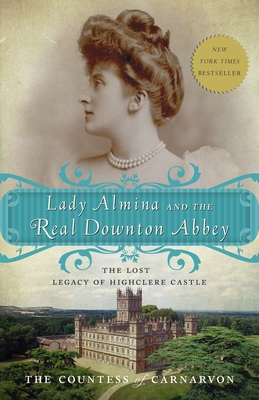
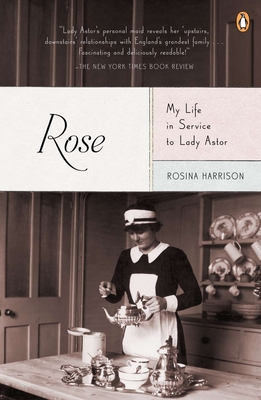

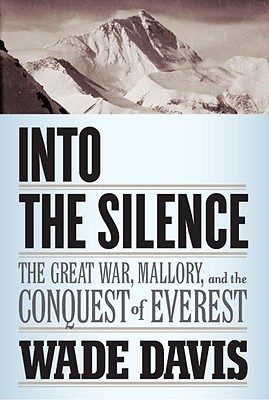

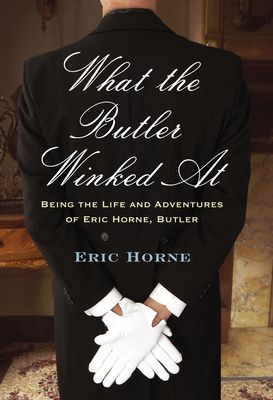

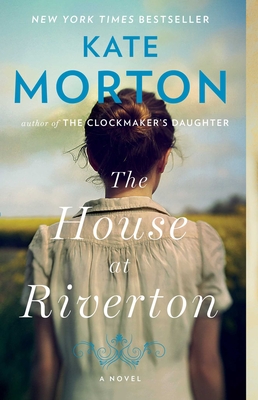
2 comments:
And also House at Tyneford - Natasha Solomon is a good one.
That does sound like a good one. Here's a link to it:
http://www.tatteredcover.com/book/9780452297647
Post a Comment